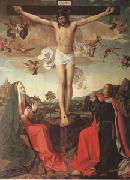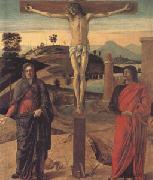Wholesale Oil Painting Reproductions No Minimum and Door to Door! |
|||||||||||
|
|
|||||||||||

|
|||||||||||
|
|
|
||||||||
All Josse Lieferinxe Oil Paintings |
||||||||
|
|
||||||||
|
|
||||||||
|
Artist Introduction: active in Provence 1493-1505/08
was a South Netherlandish painter, formerly known by the pseudonym the Master of St. Sebastian. Originating in the diocese of Cambrai in Hainaut, then part of the territories ruled by the Dukes of Burgundy. Josse Lieferinxe was documented as a "Picard" in the regions of Avignon and Marseille at the end of the fifteenth and in the early sixteenth centuries. He was first mentioned in Provence in 1493. Thus he figures among the painters of the Provençal school, whose most prominent members in an earlier generation had also been from the far north of the French-speaking world Barth lemy d'Eyck and Enguerrand Quarton. In 1503 he married Michelle, a daughter of Jean Changenet, the most prominent painter of Avignon, in whose atelier Lieferinxe may have matured his style. He was last mentioned living in 1505, and in 1508 as deceased. Before he was identified by Charles Sterling who linked his work with a document, his artistic personality was recognized, as the "Master of St. Sebastian", through a former retable of eight scenes depicting the acts and miracles of Saint Sebastian and Saint Roch, protectors against the plague, which was commissioned in 1497 for the church of Nôtre Dame des Accoul's in Marseille. Bernardino Sismondi, who originally received the commission, died, however, before he could finish the work. |
||||||||
|
|
||||||||
|
Calvary (mk05) Painting ID:: 20005 |
Wood,67 x 49 1/2''(170 x 126 cm)Acquired in 1962 |
|||||||
Height Width |
INS/CM Quality |
|||||||
|
X |
| |||||||
|
|
||||||||
All Giovanni Bellini Oil Paintings |
||||||||
|
|
||||||||
|
|
||||||||
|
Artist Introduction: Italian High Renaissance Painter, ca.1430-1516
(b ?1431-6; d Venice, 29 Nov 1516). Painter and draughtsman, son of (1) Jacopo Bellini. Although the professional needs of his family background may have encouraged him to specialize at an early date in devotional painting, by the 1480s he had become a leading master in all types of painting practised in 15th-century Venice. Later, towards the end of his long life, he added the new genres of mythological painting and secular allegory to his repertory of subject-matter. His increasing dominance of Venetian art led to an enormous expansion of his workshop after c. 1490; and this provided the training-ground not only for his numerous shop-hands and imitators (generically known as Belliniani) but probably also for a number of major Venetian painters of the next generation. Throughout his career, Giovanni showed an extraordinary capacity for absorbing a wide range of artistic influences, both from within Venetian tradition and from outside. He also oversaw a technical revolution in the art of painting, involving the gradual abandonment of the traditional Italian use of egg tempera in favour of the technique of oil painting pioneered in the Netherlands. It was thanks to Giovanni Bellini that the Venetian school of painting was transformed during the later 15th century from one mainly of local significance to one with an international reputation. He thus set the stage for the triumphs of Venetian painting in the 16th century and for the central contribution that Venice was to make to the history of European art. |
||||||||
|
|
||||||||
|
|
Calvary (mk05) Painting ID:: 20077 |
Wood,28 x 25''(71 x 63 cm)Entered the Louvre in 1970 |
||||||
Height Width |
INS/CM Quality |
|||||||
|
X |
| |||||||
|
|
||||||||
|
Prev Next
|
||||||||
|
|
||||||||
|
Related Paintings to Giovanni Bellini :. |
||||||||
|
|
||||||||
|
CONTACT US |


